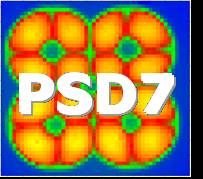Speaker
Dr
Anatloy Maltsev
(JINR, Russia)
Description
The methods and detectors for nondestructive diagnostics and study
of charged
particles of bunches or beams (electron, electron-ion, proton) are
submitted
in this paper. The methods of based on the use of relativistic
particles
synchrotron radiation in a wide spectral range, from the ultraviolet
to the
far long-wave infrared region [1, 2].
Methods for measuring and estimating the energy, number of charged
particles
(current) and geometrical parameters (cross-section) of beams in ring
accelerators using synchrotron radiation are reviewed, together with
the
information-measuring systems designed to detect synchrotron
radiation and
realize these methods.
The practical possibilities of infrared synchrotron methods and
systems of
diagnostics are demonstrated for the example of the low-energy
(electron
energy E = 2.5 - 20 MeV, electron orbit R = 40 - 4 cm) electron-ion
ring
accelerator. The synchrotron radiation spectrum that is used mainly
in the
infrared region (wave length range > 1 mkm). The detection systems
incorporate specially designed infrared-optical elements: a high-
vacuum
window of optical ceramics (analog IRTRAN) and broad-band, long-
focus optical
channels. The radiation is detected in the spectral region 0.3 - 45
mkm by
infrared detectors operating at low temperature or room temperature.
Results are presented on the measurement of the number of electrons
in the
bunch, the equilibrium radius and dimensions of the small cross
section of
ring bunch, and the angular divergence of the synchrotron radiation
relative
to the median plane of the ring bunch.
References
[1] A.A.Maltsev, M.A.Maltsev - Atom. Energy. 80 (3) 1996. P. 190.
[2] A.A.Maltsev, M.A.Maltsev - Techn. Phys. 42 (4) 1997. P. 378.
Primary author
Dr
Anatloy Maltsev
(JINR, Russia)




